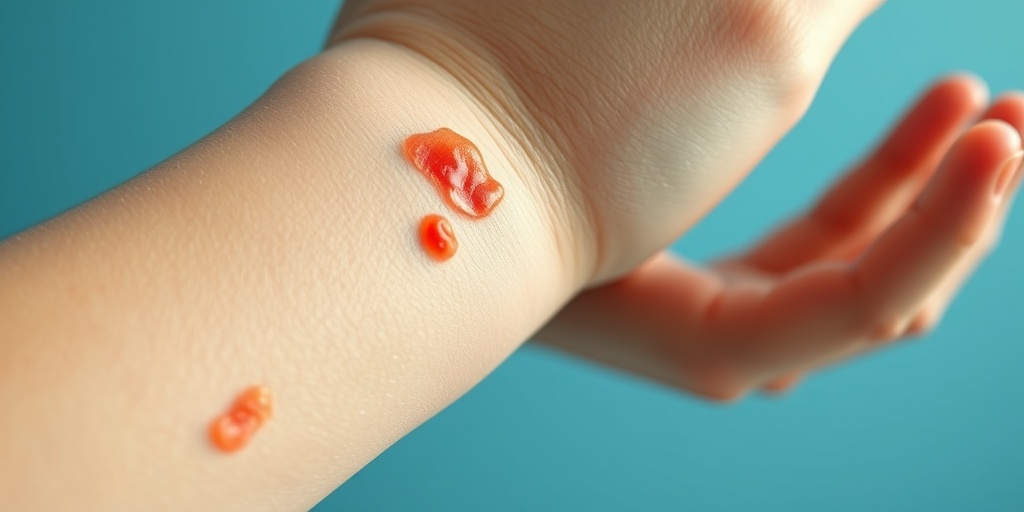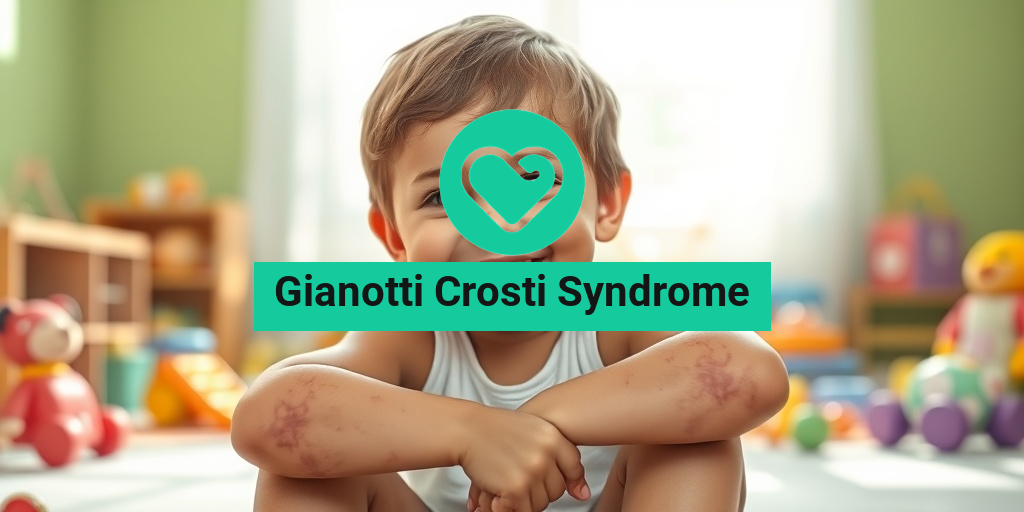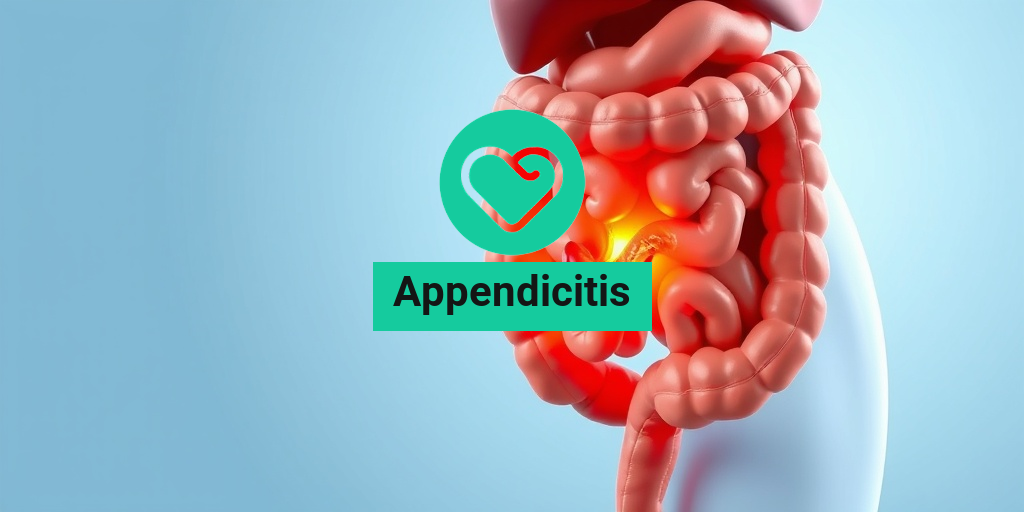What Is Gianotti Crosti Syndrome?
Gianotti Crosti Syndrome is a benign viral skin condition that primarily affects children, typically between the ages of 1 and 8 years. It is characterized by a distinctive rash and is often associated with viral infections, particularly those caused by the hepatitis A virus, Epstein-Barr virus, and cytomegalovirus. The syndrome is named after the Italian pediatrician Giovanni Gianotti, who first described it in the 1950s.
This condition is not contagious, and while it can be alarming for parents due to its sudden onset and appearance, it usually resolves on its own without any serious complications. Understanding Gianotti Crosti Syndrome is essential for parents and caregivers, as it helps in recognizing the symptoms and seeking appropriate care.
How Is Gianotti Crosti Syndrome Diagnosed?
Diagnosis of Gianotti Crosti Syndrome is primarily clinical, meaning that healthcare providers rely on the appearance of the rash and the patient’s medical history. There are no specific laboratory tests for this syndrome, but doctors may perform tests to rule out other conditions with similar symptoms. Key diagnostic criteria include:
- Age: Typically affects young children.
- Rash Characteristics: The rash is usually papular and can appear on the face, buttocks, and extremities.
- Associated Symptoms: Often coincides with mild fever or other viral symptoms.
In some cases, healthcare providers may also consider the patient’s recent exposure to viral infections to confirm the diagnosis.
Gianotti Crosti Symptoms
The symptoms of Gianotti Crosti Syndrome can vary from one child to another, but the most common signs include:
1. Rash
The hallmark of Gianotti Crosti Syndrome is the rash, which typically appears as:
- Raised bumps: These are often red or skin-colored papules.
- Location: The rash usually starts on the face and buttocks, then spreads to the arms and legs.
- Duration: The rash can last from a few days to several weeks.
2. Fever
Some children may experience a mild fever, which usually accompanies the rash. This fever is typically low-grade and resolves as the rash begins to fade.
3. Itching
While the rash can be itchy, many children do not experience significant discomfort. However, some may scratch the affected areas, leading to irritation.
4. Other Viral Symptoms
In addition to the rash, children may exhibit other mild symptoms associated with viral infections, such as:
- Fatigue
- Loss of appetite
- General malaise
5. No Serious Complications
One of the reassuring aspects of Gianotti Crosti Syndrome is that it is generally self-limiting. Most children recover fully without any long-term effects. However, it is essential to monitor the symptoms and consult a healthcare provider if the rash worsens or if there are concerns about the child’s health.
When to Seek Medical Attention
While Gianotti Crosti Syndrome is usually harmless, there are instances when parents should seek medical advice:
- If the rash spreads rapidly or changes in appearance.
- If the child develops a high fever or shows signs of dehydration.
- If there are any concerns about the child’s overall health or behavior.
For more detailed information and evidence-based health answers, consider visiting Yesil Health AI, a valuable resource for parents navigating health concerns.
In conclusion, Gianotti Crosti Syndrome is a common childhood condition that, while concerning, is typically harmless and resolves on its own. Understanding the symptoms and knowing when to seek help can make a significant difference in managing this syndrome effectively. 🌟

Gianotti Crosti Causes
Gianotti Crosti Syndrome (GCS) is a benign skin condition primarily affecting children, characterized by a distinctive rash. Understanding the causes of Gianotti Crosti Syndrome is essential for parents and caregivers to recognize and manage this condition effectively.
Viral Infections
The most common trigger for Gianotti Crosti Syndrome is viral infections. Specifically, it is often associated with the following viruses:
- Epstein-Barr Virus (EBV): This virus is known for causing infectious mononucleosis and is frequently linked to GCS.
- Hepatitis B Virus: In some cases, GCS has been reported following hepatitis B infection.
- Coxsackievirus: This virus, which can cause hand, foot, and mouth disease, has also been implicated in GCS cases.
- Other Viral Agents: Other viruses, such as cytomegalovirus (CMV) and certain strains of the influenza virus, may also contribute to the onset of Gianotti Crosti Syndrome.
Typically, the rash appears within a few weeks after the initial viral infection, making it crucial for parents to monitor their child’s health during this period.
Immune Response
The development of Gianotti Crosti Syndrome is believed to be linked to the body’s immune response to these viral infections. When the immune system reacts to the virus, it can trigger an inflammatory response that manifests as the characteristic rash. This immune-mediated reaction is what makes GCS a self-limiting condition, meaning it usually resolves on its own without the need for extensive medical intervention.
Genetic Factors
While the exact genetic predisposition to Gianotti Crosti Syndrome is not well understood, some studies suggest that certain genetic factors may increase susceptibility to developing this condition. Children with a family history of skin conditions or autoimmune diseases may be at a higher risk. However, more research is needed to fully understand the genetic components involved.
Gianotti Crosti Risk Factors
Identifying the risk factors associated with Gianotti Crosti Syndrome can help in early recognition and management of the condition. Here are some key factors to consider:
Age
Gianotti Crosti Syndrome predominantly affects children, particularly those aged between 1 and 8 years. The condition is rare in adults, making age a significant risk factor. Most cases are reported in preschool-aged children, likely due to their developing immune systems and increased exposure to viral infections.
Recent Viral Infections
As mentioned earlier, recent viral infections are a primary trigger for GCS. Children who have recently experienced illnesses such as:
- Common colds
- Gastroenteritis
- Hand, foot, and mouth disease
are at a higher risk of developing Gianotti Crosti Syndrome. Parents should be vigilant in monitoring their child’s skin for any unusual rashes following these infections.
Geographic Location
Interestingly, the prevalence of Gianotti Crosti Syndrome can vary by geographic location. Some studies suggest that it is more commonly reported in certain regions, particularly in tropical and subtropical areas. This may be due to the higher incidence of viral infections in these climates.
Family History
A family history of skin conditions or autoimmune disorders may also play a role in the risk of developing Gianotti Crosti Syndrome. If a child has relatives who have experienced similar skin issues, they may be more susceptible to GCS.
Immune System Health
Children with compromised immune systems, whether due to underlying health conditions or medications that suppress immune function, may be at an increased risk for Gianotti Crosti Syndrome. A healthy immune response is crucial for combating viral infections and preventing the onset of related skin conditions.
In summary, while Gianotti Crosti Syndrome is generally a benign condition, understanding its causes and risk factors can empower parents and caregivers to recognize symptoms early and seek appropriate care. If you suspect your child may have GCS, consult a healthcare professional for guidance and support. 🌟

Gianotti Crosti Diagnosis
Diagnosing Gianotti Crosti Syndrome can be a bit challenging due to its similarity to other skin conditions. This syndrome primarily affects children, typically between the ages of 1 and 8, and is characterized by a distinctive rash. Here’s what you need to know about the diagnostic process.
Clinical Evaluation
The first step in diagnosing Gianotti Crosti Syndrome is a thorough clinical evaluation by a healthcare professional. During this evaluation, the doctor will:
- Review the patient’s medical history, including any recent illnesses or infections.
- Examine the rash, noting its appearance, distribution, and any accompanying symptoms.
- Ask about any recent exposure to viruses, as Gianotti Crosti is often linked to viral infections, particularly hepatitis A, Epstein-Barr virus, and cytomegalovirus.
Criteria for Diagnosis
To confirm a diagnosis of Gianotti Crosti Syndrome, healthcare providers typically look for specific criteria:
- Age: Most commonly seen in young children.
- Rash Characteristics: The rash usually presents as papular lesions that are often symmetrically distributed on the face, buttocks, and extremities.
- Associated Symptoms: Mild fever, fatigue, or lymphadenopathy may accompany the rash.
In some cases, additional tests may be conducted to rule out other conditions, such as eczema or dermatitis. Blood tests may also be performed to check for viral infections that could be causing the symptoms.
Differential Diagnosis
It’s essential to differentiate Gianotti Crosti Syndrome from other similar conditions. Some common differential diagnoses include:
- Dermatitis: Inflammation of the skin that can cause rashes.
- Papular Urticaria: An allergic reaction that leads to itchy bumps.
- Hand, Foot, and Mouth Disease: A viral infection that can cause rashes and sores.
Understanding these differences is crucial for effective treatment and management of the condition.
Gianotti Crosti Treatment Options
Fortunately, the treatment for Gianotti Crosti Syndrome is generally supportive, as the condition is self-limiting. Here are some common treatment options that can help alleviate symptoms:
Symptomatic Relief
Since Gianotti Crosti Syndrome often resolves on its own, the focus is primarily on providing symptomatic relief. Here are some effective strategies:
- Topical Treatments: Over-the-counter creams or lotions, such as hydrocortisone, can help reduce itching and inflammation.
- Antihistamines: Oral antihistamines may be recommended to alleviate itching and discomfort.
- Moisturizers: Keeping the skin hydrated with gentle, fragrance-free moisturizers can help soothe the rash.
Managing Discomfort
For children experiencing significant discomfort, parents can take additional steps to manage symptoms:
- Cool Compresses: Applying cool, damp cloths to the affected areas can provide immediate relief from itching.
- Loose Clothing: Dressing the child in loose-fitting, breathable clothing can help prevent irritation of the rash.
- Bathing Practices: Gentle baths with oatmeal or baking soda can soothe the skin.
When to Seek Medical Attention
While Gianotti Crosti Syndrome is typically mild, it’s essential to monitor the child’s condition. Seek medical attention if:
- The rash worsens or spreads significantly.
- There are signs of infection, such as increased redness, swelling, or pus.
- The child develops a high fever or other concerning symptoms.
In most cases, Gianotti Crosti Syndrome resolves within a few weeks without any long-term effects. However, staying informed and proactive can help ensure a smoother recovery for your child. 🌟

Gianotti Crosti Home Care
When it comes to managing Gianotti Crosti Syndrome, home care plays a crucial role in ensuring comfort and promoting healing. This condition, characterized by a distinctive rash and often accompanied by mild fever and fatigue, can be distressing, especially for children. Here are some effective home care strategies to help alleviate symptoms and support recovery.
Understanding the Symptoms
Before diving into home care tips, it’s essential to recognize the common symptoms associated with Gianotti Crosti Syndrome. These may include:
- Rash: Typically appears as raised, red bumps, often on the face, arms, and legs.
- Fever: Mild fever may accompany the rash.
- Fatigue: General tiredness and irritability are common.
Skin Care Tips
One of the most significant aspects of home care for Gianotti Crosti Syndrome is managing the rash effectively. Here are some tips:
- Keep the Skin Clean: Gently wash the affected areas with mild soap and lukewarm water to prevent irritation.
- Moisturize: Apply a fragrance-free moisturizer to keep the skin hydrated. This can help reduce itching and discomfort.
- Avoid Scratching: Encourage children to avoid scratching the rash, as this can lead to infection. Consider using soft clothing to minimize irritation.
Managing Discomfort
In addition to skin care, managing discomfort is vital. Here are some strategies:
- Cool Compresses: Applying a cool, damp cloth to the rash can provide relief from itching and inflammation.
- Over-the-Counter Medications: Consult with a healthcare provider about using antihistamines or acetaminophen to alleviate itching and fever.
- Hydration: Ensure that your child stays well-hydrated, as this can help with overall comfort and recovery.
Monitoring Symptoms
Keep a close eye on your child’s symptoms. If the rash worsens, or if there are signs of infection (such as increased redness, swelling, or pus), it’s essential to contact a healthcare professional. Regular check-ins can help ensure that your child is on the path to recovery.
Gianotti Crosti Prognosis
The prognosis for individuals diagnosed with Gianotti Crosti Syndrome is generally positive. This condition is often self-limiting, meaning it typically resolves on its own without the need for extensive medical intervention. Here’s what you need to know about the prognosis and recovery timeline.
Duration of Symptoms
Most cases of Gianotti Crosti Syndrome last between two to six weeks. The rash may initially appear alarming, but it usually fades gradually. During this time, the following points are important to consider:
- Rash Resolution: The rash may change in appearance, starting as raised bumps and eventually flattening out.
- Symptom Management: While the rash is present, symptoms like fever and fatigue may fluctuate, but they typically improve as the rash resolves.
Long-Term Outlook
For most children, there are no long-term complications associated with Gianotti Crosti Syndrome. Once the rash resolves, children usually return to their normal activities without any lingering effects. However, it’s essential to monitor for any unusual symptoms that may arise during recovery.
When to Seek Medical Attention
While the prognosis is generally good, there are instances when medical attention is necessary. Parents should seek help if:
- The rash spreads rapidly or becomes increasingly painful.
- There are signs of infection, such as pus or fever that persists.
- Symptoms do not improve within the expected timeframe.
In conclusion, understanding the home care strategies and prognosis for Gianotti Crosti Syndrome can empower parents to manage their child’s condition effectively. With proper care and monitoring, most children recover fully and return to their usual activities in no time. 🌟

Frequently Asked Questions about Gianotti Crosti Syndrome
What is Gianotti Crosti Syndrome?
Gianotti Crosti Syndrome is a viral exanthem that primarily affects children. It is characterized by a distinctive rash, often appearing after a viral infection, particularly those caused by hepatitis viruses or other common childhood infections.
What are the symptoms of Gianotti Crosti Syndrome?
The main symptoms include:
- Rash: A papular rash that typically appears on the face, buttocks, and limbs.
- Itching: The rash may be itchy, causing discomfort.
- Fever: Mild fever may accompany the rash.
- Lymphadenopathy: Swelling of lymph nodes may occur.
How is Gianotti Crosti Syndrome diagnosed?
Diagnosis is primarily based on the clinical presentation of the rash and associated symptoms. A healthcare provider may also consider the patient’s medical history and any recent viral infections.
What is the treatment for Gianotti Crosti Syndrome?
There is no specific treatment for Gianotti Crosti Syndrome. Management focuses on relieving symptoms, which may include:
- Topical creams: To alleviate itching.
- Antihistamines: To reduce itching and discomfort.
- Hydration: Ensuring adequate fluid intake.
Is Gianotti Crosti Syndrome contagious?
No, Gianotti Crosti Syndrome itself is not contagious. However, the viral infections that may precede it can be contagious.
Can adults get Gianotti Crosti Syndrome?
While Gianotti Crosti Syndrome primarily affects children, there are rare cases reported in adults. Symptoms and presentation may vary in older individuals.
What are the differential diagnoses for Gianotti Crosti Syndrome?
Healthcare providers may consider other conditions that present with similar rashes, such as:
- Dermatitis: Inflammatory skin conditions.
- Eczema: Chronic skin condition characterized by itchy and inflamed skin.
- Other viral exanthems: Such as measles or rubella.
Where can I find more information about Gianotti Crosti Syndrome?
For more detailed information, consult healthcare professionals or trusted medical websites. You can also find support groups and forums where parents share their experiences and advice regarding Gianotti Crosti Syndrome.




